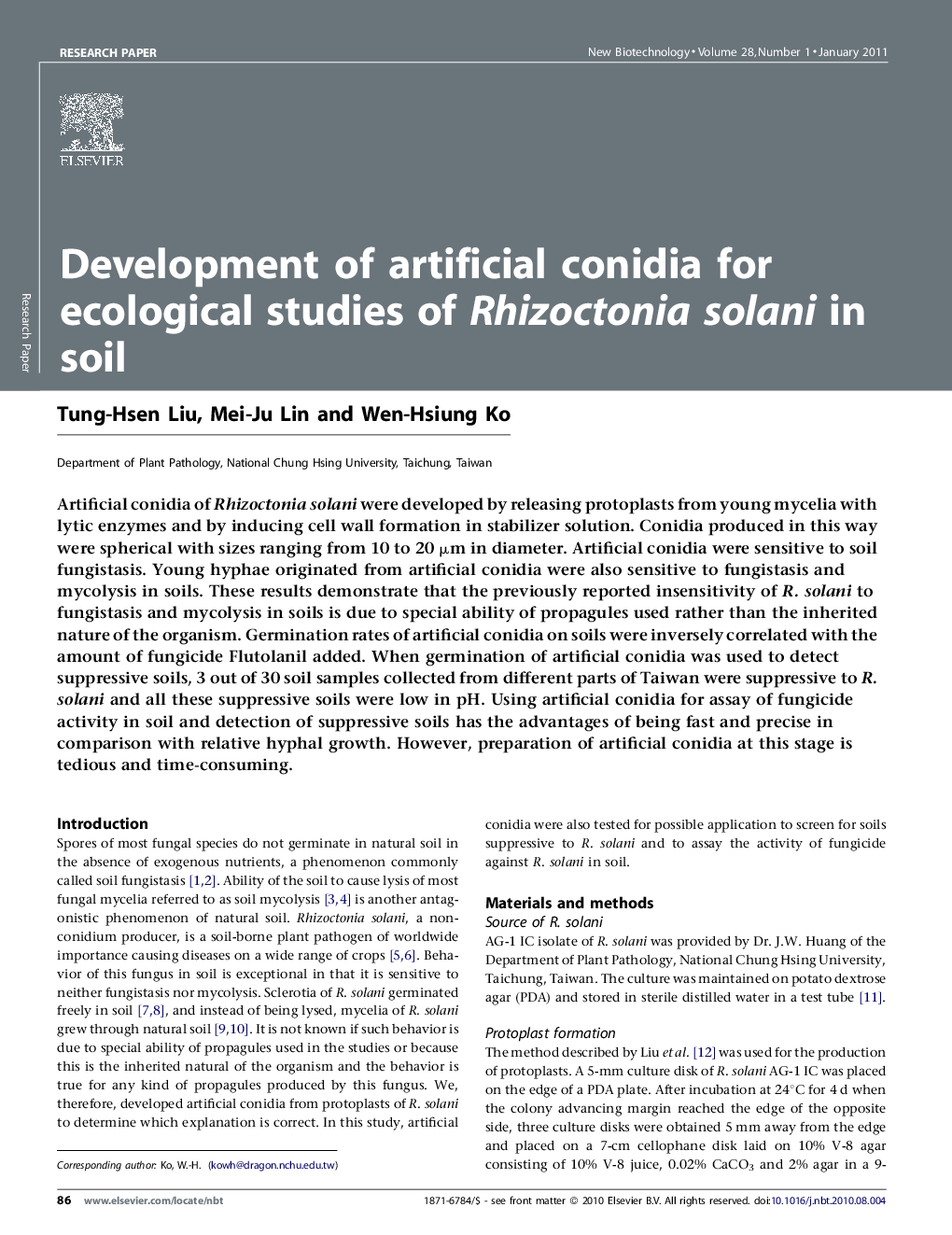| Article ID | Journal | Published Year | Pages | File Type |
|---|---|---|---|---|
| 33894 | New Biotechnology | 2011 | 6 Pages |
Artificial conidia of Rhizoctonia solani were developed by releasing protoplasts from young mycelia with lytic enzymes and by inducing cell wall formation in stabilizer solution. Conidia produced in this way were spherical with sizes ranging from 10 to 20 μm in diameter. Artificial conidia were sensitive to soil fungistasis. Young hyphae originated from artificial conidia were also sensitive to fungistasis and mycolysis in soils. These results demonstrate that the previously reported insensitivity of R. solani to fungistasis and mycolysis in soils is due to special ability of propagules used rather than the inherited nature of the organism. Germination rates of artificial conidia on soils were inversely correlated with the amount of fungicide Flutolanil added. When germination of artificial conidia was used to detect suppressive soils, 3 out of 30 soil samples collected from different parts of Taiwan were suppressive to R. solani and all these suppressive soils were low in pH. Using artificial conidia for assay of fungicide activity in soil and detection of suppressive soils has the advantages of being fast and precise in comparison with relative hyphal growth. However, preparation of artificial conidia at this stage is tedious and time-consuming.
